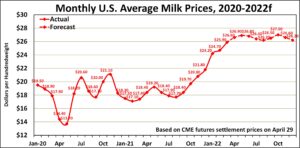Much like plant-based imitators, precision fermentation technology is a sector working to create so-called animal-free dairy products. However, Clay Detlefsen, National Milk Producers Federation Senior Vice President and Staff Counsel, says a real dairy product cannot be made with precision fermentation technology. “We’re seeing a lot of folks right now really misleading the public as to what they’re doing. You cannot make a real dairy product with fermentation technology,” he said in an interview with the National Association of Farm Broadcasters.






